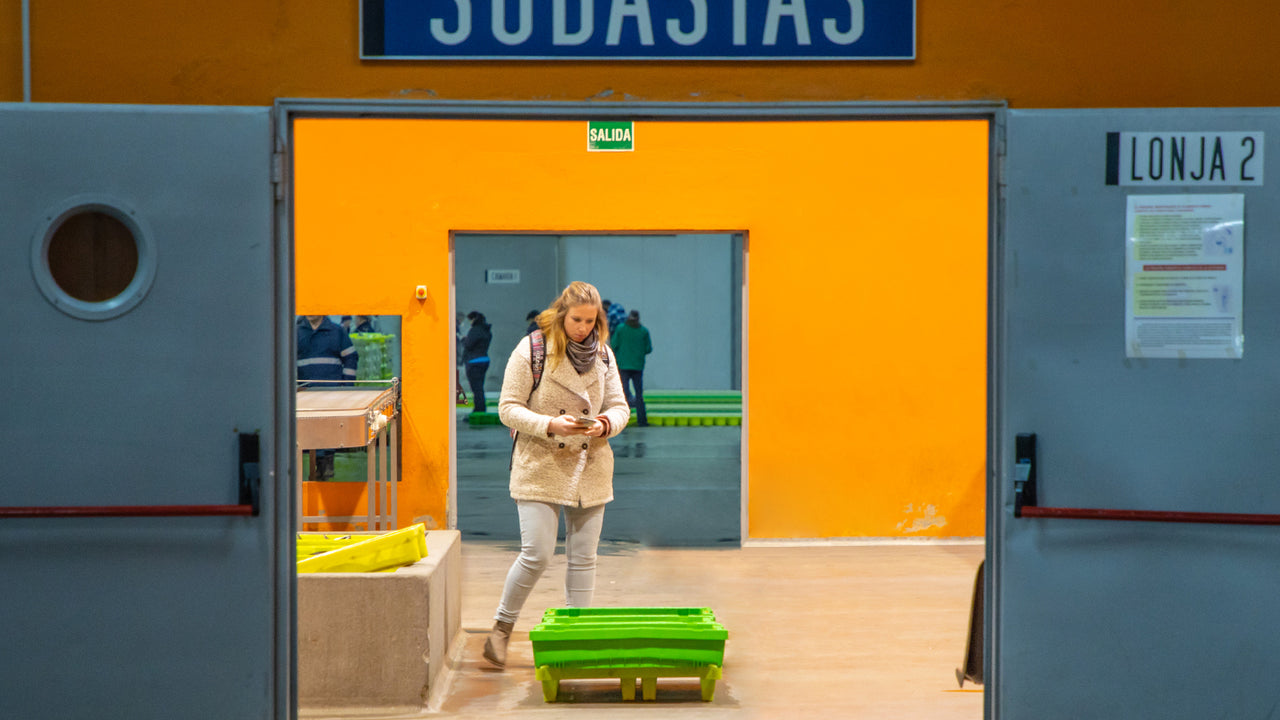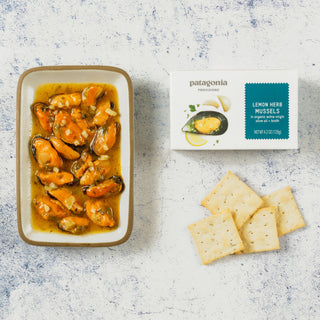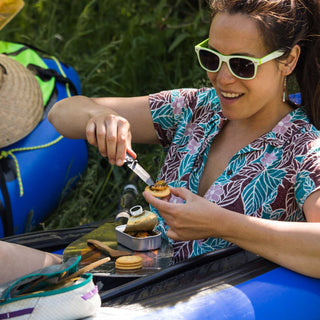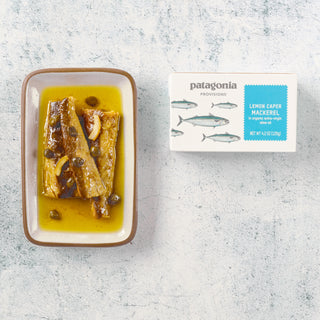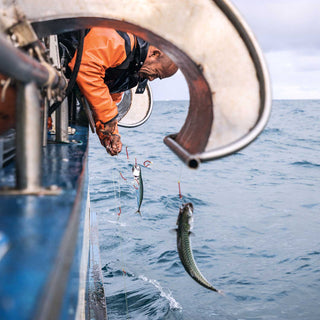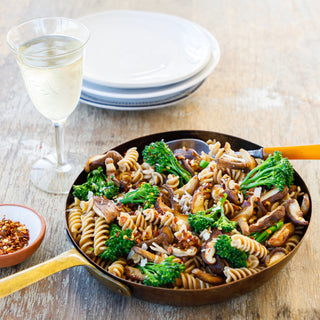Spanish White Anchovies
Our Spanish White Anchovies are more than just a delicious, mild-flavored seafood treat. They support communities of small, family-run businesses, and are an easy, nutritious way to eat lower on the food chain. Photo by Carol Studio
Photo by Carol Studio
Nutrition: Eat the Bait
Forage fish like anchovies make eating lower on the food chain delicious and easy. And eating low on the food chain isn’t just better for the planet, it’s better for humans as well.
The anchovy’s short lifespan and plankton diet means it doesn’t accumulate the high levels of toxic heavy metals found in larger, apex-predator fish such as tuna or swordfish.
Anchovies are also an excellent source of protein and calcium. They contain aw hopping amount of vitamin B-12 (as much as 560% DV), a nutrient that helps keep both the nerve and blood cells healthy. *In other words, our White Anchovies are everything you love about seafood, only smaller.
*See nutrition information for total fat, saturated fat and cholesterol content

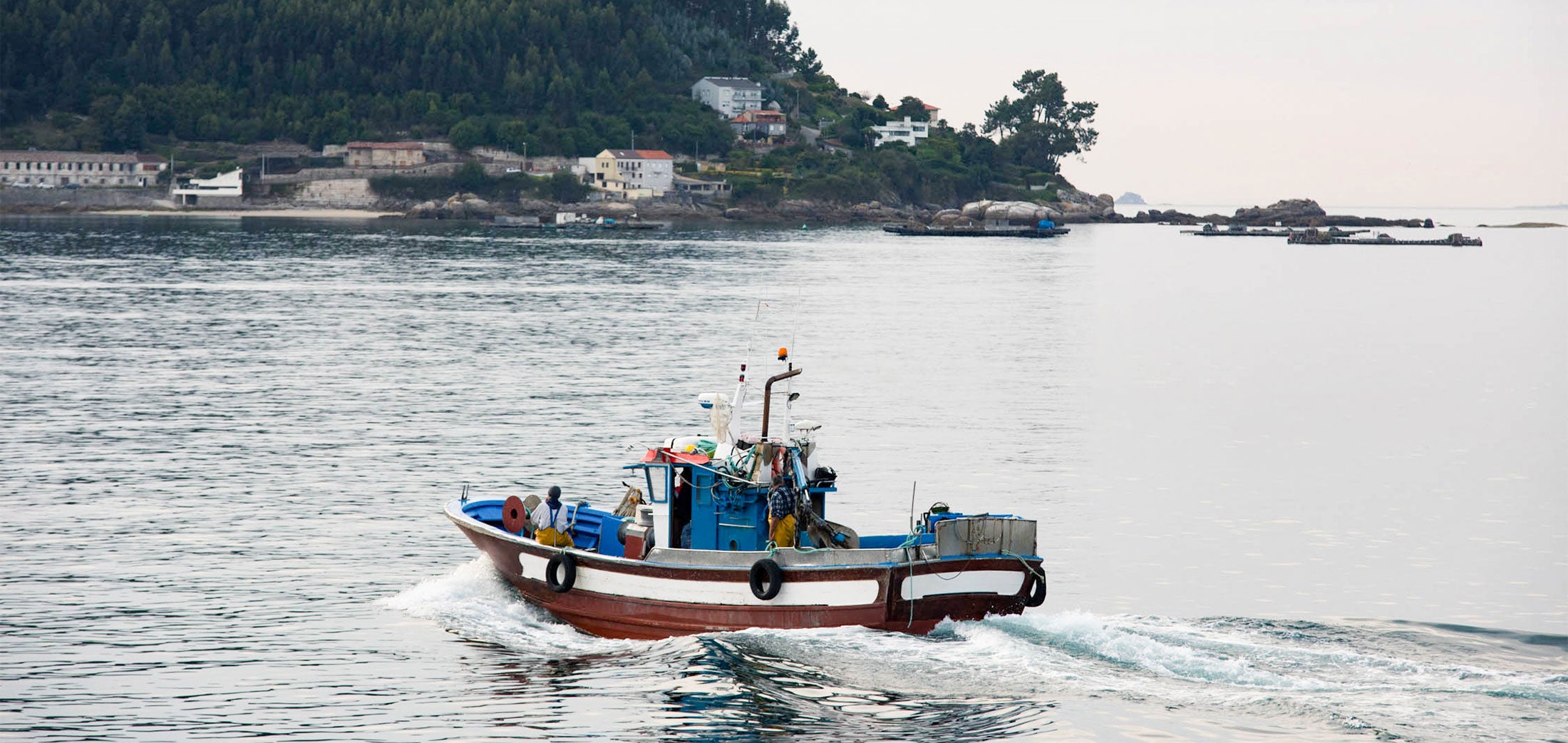 Photo by Carol Studio
Photo by Carol StudioSourcing: The Spanish Solution
We harvest our anchovies from thriving populations off northern Spain, using responsible, small-scale fishing practices.
The fishing fleet, based in the province of Cantabria, employs small-scale purse seines to minimize bycatch and ensure the highest quality of their harvest. Because anchovies shoal tightly together, the nets—which surround a school of fish and are then closed up around them—can be managed effectively to target anchovies.
The harvested fish are transported to a fifth-generation family company, Conservas Antonio Pérez Lafuente (a certified B Corp that employs mostly women). There, they are processed and canned in extra-virgin olive oil with regional seasonings, turning this abundant forage fish into afresh-tasting, shelf-stable delicacy. Called “white anchovies” for their light color, they're the exact opposite of the salty, dark-brown anchovies used for pizzas and Caesar salads.
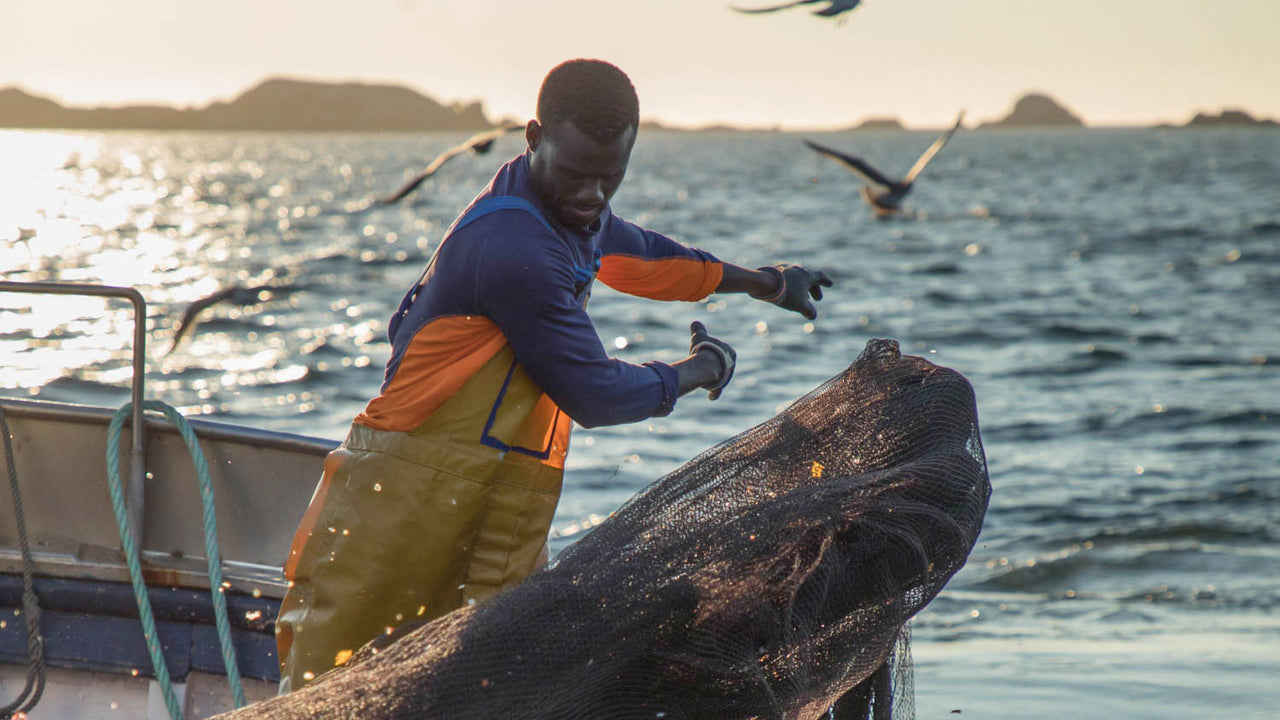
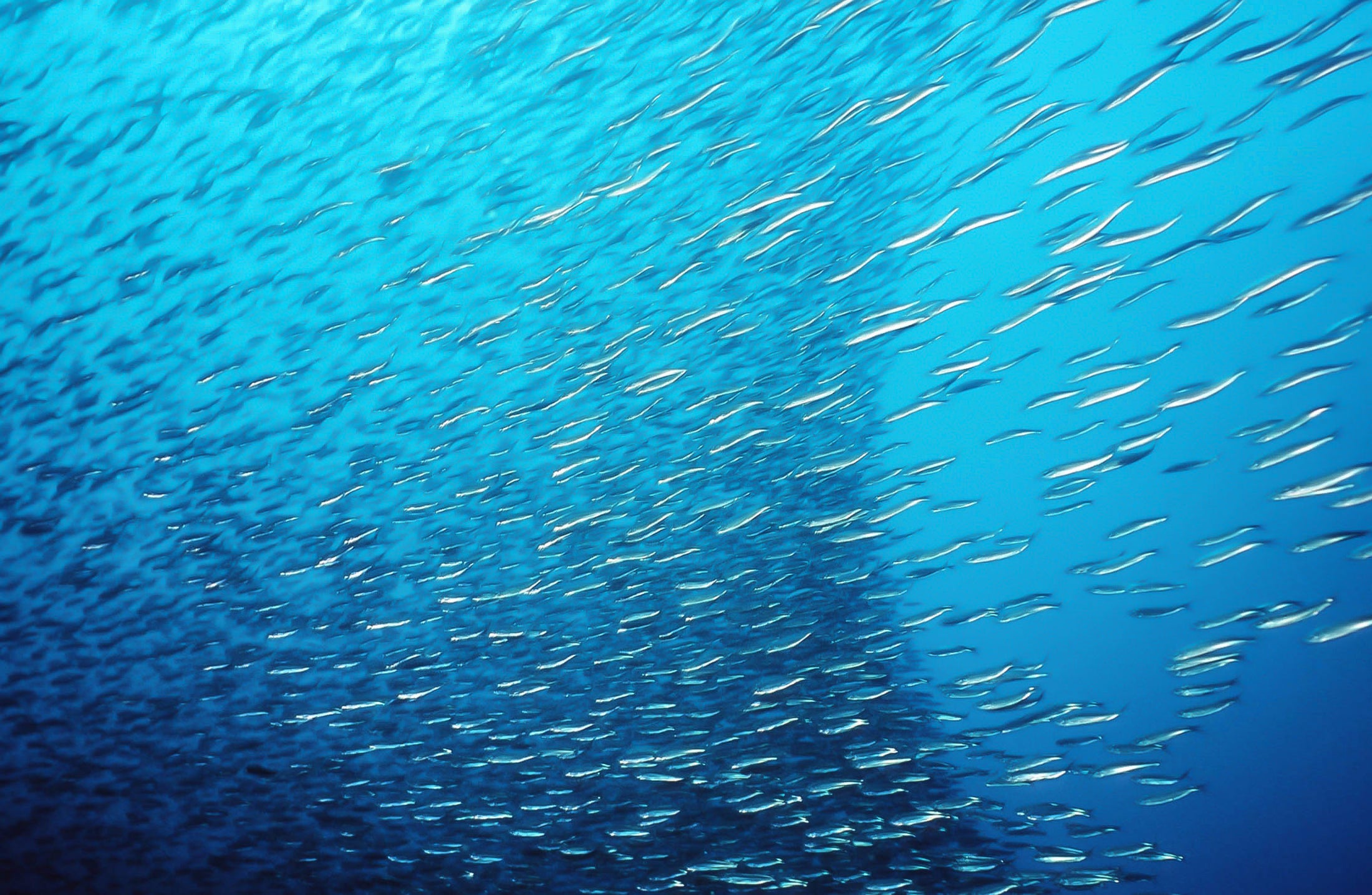 Alamy Photo
Alamy PhotoEnviro: Why Anchovies?
Eating anchovies, a forage fish (aka baitfish), takes pressure off larger, less-abundant species like tuna and swordfish
Tuna and swordfish are long lived and slow to mature, meaning it takes a while for them to reproduce—so they can’t withstand the pressures of the global appetite for their delicious meat. Abundant fish that live lower on the ocean foodchain, like anchovies, provide a tasty alternative. The anchovy’s short lifespan and quick reproduction, along with strict management, make these little fish an important and fully renewable resource. What’s more, they swim in tightly packed schools, which means we can harvest them with very little bycatch.
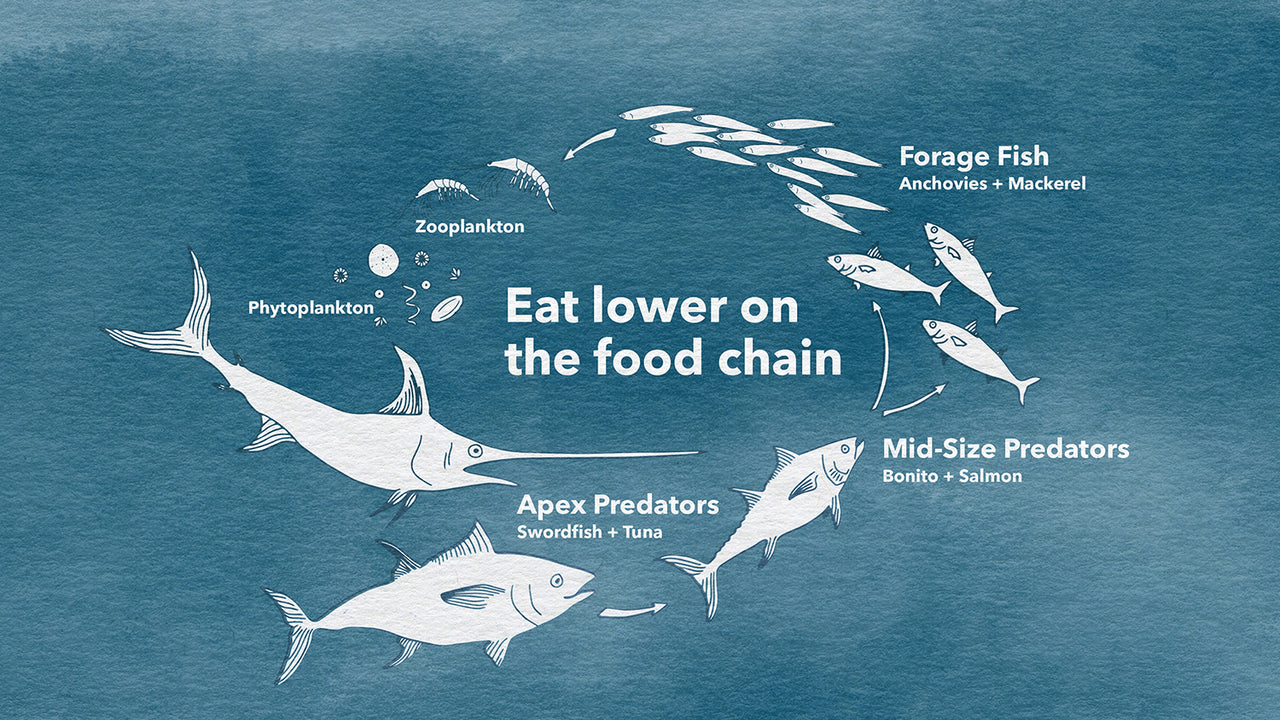
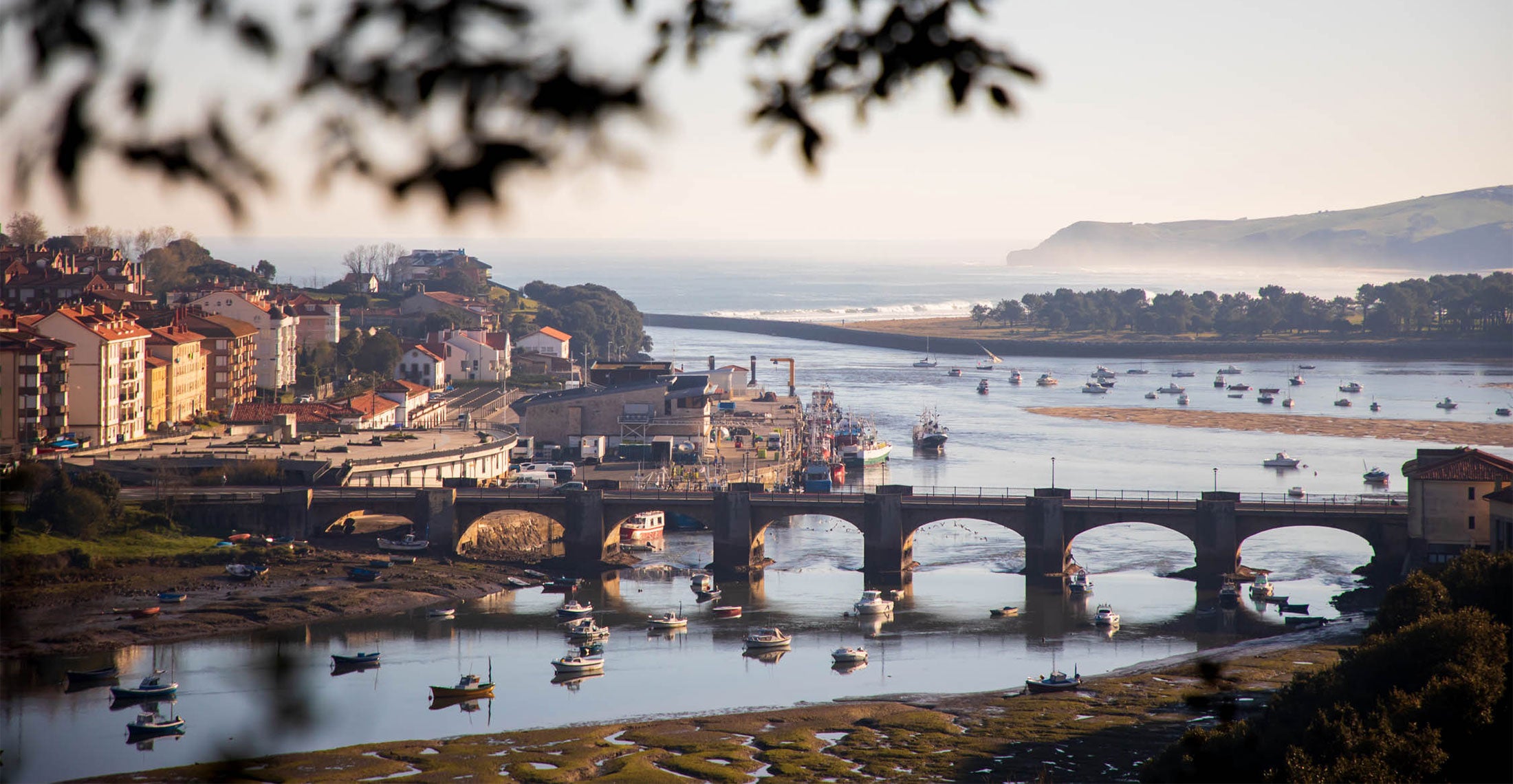 Photo by Amy Kumler
Photo by Amy KumlerHistory: The Fishing Guilds of Cantabria
In the ancient villages along the Bay of Biscay, in northern Spain, fishermen and processors work together to ensure a healthy future for fish and community alike.
All along the densely forested, mountainous coastline of Cantabria, small boats head out to sea, owned by families who have fished these waters for centuries. In this autonomous region of Spain, the fishermen who harvest our anchovies and Atlantic mackerel belong to traditional cofradías, or guilds, which date back to medieval times. The guilds share profits and best practices, and ensure worker safety. They’re also social institutions, with their own bars and festivals. This tradition of cooperation, with membership handed down through generations, creates a deep sense of responsibility to protect ocean resources, and the communities that depend on them, for the future.
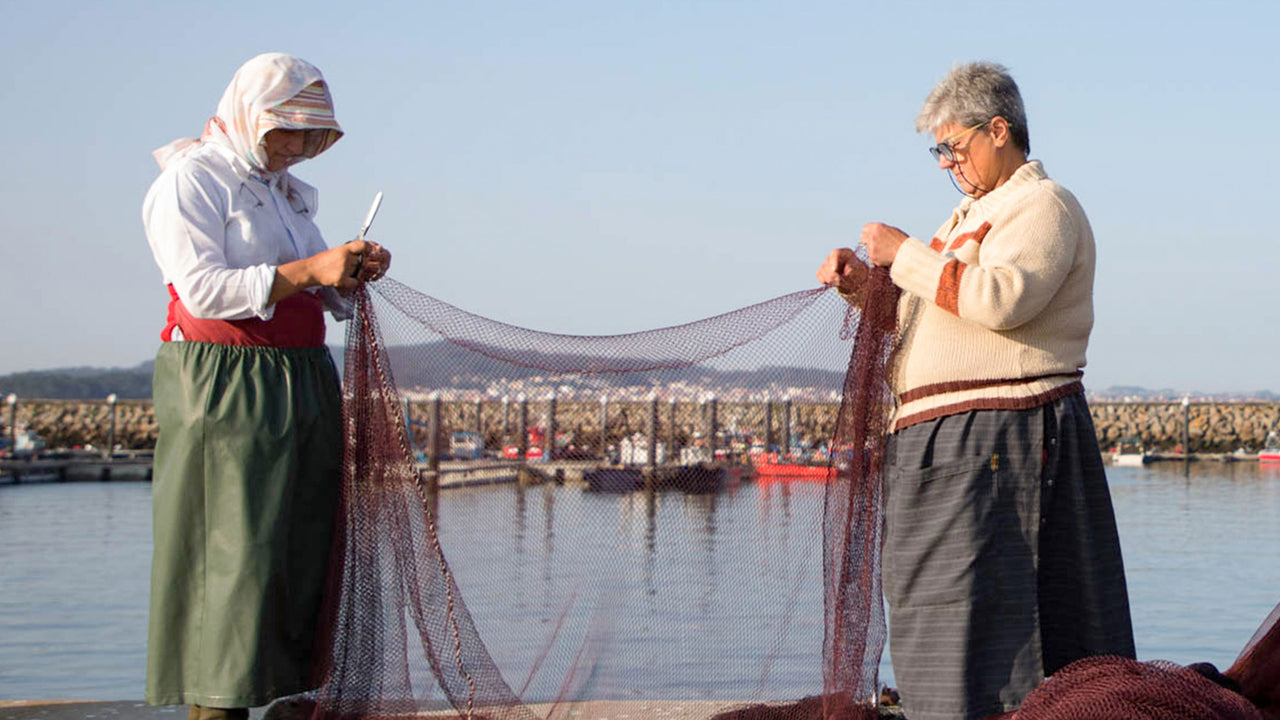

Partners: Guided By Science
Photo Courtesy of Good Fish Foundation
We work with Good Fish Foundation, of Veenendaal, the Netherlands, to ensure that Bay of Biscay anchovies, as harvested by the Cantabrian fleet, remain a truly renewable resource.
As one of the few major food companies that work in direct partnership with fish conservation and science organizations, our goal is to find solutions that help protect, rather than deplete, our home planet. Good Fish evaluates the sustainability of fisheries in Europe and works with fishermen, fish farmers, processors and retailers to help seafood buyers make environmentally sound decisions about what to eat. The group also publishes a sustainable seafood guide for consumers, advises chefs, and is working to ensure that by 2030, the Netherlands catches, farms, sells and consumes only sustainable fish. “Forage fish—such as mackerel, sardines and anchovies—are low in the food chain,” says Tatiana Lodder, Seafood Assessor for Good Fish. “There’s a lot of biomass and they’re much more resilient than the larger, higher trophic species.” Anchovies have emerged as a wise choice for the Netherlands and beyond.
